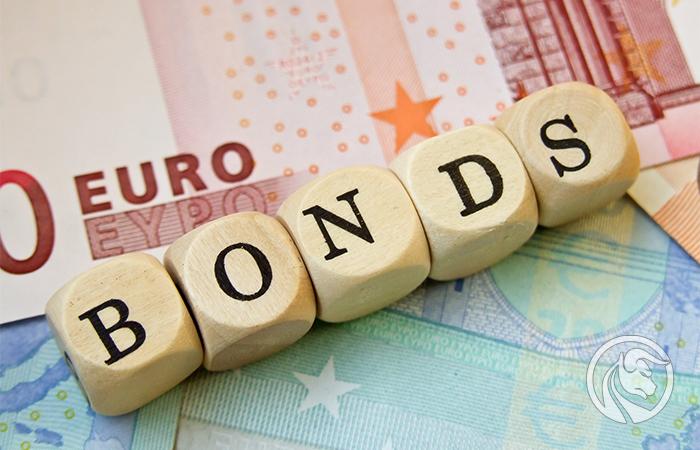Bonds. Let's buy bonds. – Saxo Bank forecasts for QXNUMX
Either we have a once-in-XNUMX-year chance to lock interest rates at the cycle maximum, or we are at a turning point in which there will be a complete paradigm shift to the moment of creative destruction in economic policy described by Schumpeter due to excessive government interference.
Opportunity or destruction? The choice seems simple, but the problem is that the opportunity is a function of a poorly functioning market and an economic model built on state interventionism, while Schumpeter's creative destruction is a natural process of socio-economic evolution.
We see three different scenarios with their respective probabilities:
- Chance: global interest rates have indeed reached their peak (50%)
- Excessive government interference: more and more interventions and regulations to keep the economy afloat under the current model (35%)
- Creative destruction – resetting the economy to market distribution, accepting full business cycles (15%).
Chance
As real interest rates are too high, we are seeing negative consequences for industries and consumers in need of financing. These consequences are already starting to be seen among green transition companies, such as offshore wind developers, as the economic value of their ventures declines sharply at current interest rates.
Consumers may have already spent their savings from the Covid pandemic, and with credit card, mortgage and car costs at twice the historical average, they are now having to slow down on spending.
There is also a liquidity risk as governments continue to issue debt at a rate that leaves traditional buyers of government bonds glutted with investments of negligible value.
We believe that both economic slowdown and liquidity risk are equally likely.
Excessive government interference
It is ironic to write about excessive government interference as a future event because it has already begun. The number of new regulations is disturbing, not so much because of their intentions, but because of the way they are implemented, which means endless bureaucracy.
From October 1, Europe will introduce a border-based price adjustment mechanism CO emissions2, which really comes down to an old, classic trade term for a protectionist tax barrier. Green regulation and ESG ratings are the talk of the town in the ivory towers of politicians and central banks. They want to be seen as "taking action" and as part of this they distort private solutions and initiatives. However, despite the failed attempt to change direction, they argue:
“The problem is not too much government regulation and policy, but rather that there is too little!”.
Perhaps a crash course is needed here "Introduction to Economics". What is not productive will fail unless governments artificially keep these initiatives alive. This is a highly likely scenario.
Driving private capital and private initiative out of the market is never a good idea. This will lead to rising deficits, unsustainable debt levels and the need to impose maximum costs on everything from capital to prices. This may mean price, rent and yield curve controls, in which politicians will centrally control the economy to correct the situation and "protect" their voters. In this scenario, terminal rates will rise, likely to 500-550 basis points for XNUMX-year benchmark US bond yields.
Creative destruction
Libertarian economists keep returning to Schumpeter's theory of an economic model that needs regular disasters to reset its parameters and that thrives on innovation and the implementation of more productive methods. This is a crisis that creates a new foundation for economic recovery.
The risk here is probably that this process must result from the ever-growing inequality between young and old generations, between small and medium-sized enterprises and multinational companies, and between those who have some wealth and those who do not. I doubt whether there will be a change in the economic model towards this scenario. Too much political capital has been invested in the current belief in keeping everything stable and avoiding recession at all costs.
There is some chance that voters will say "enough!". For now, the right, especially in Europe, is gaining in the polls by prioritizing the individual over the government.
For an older person like me, it smells of the 80s, when Arthur Laffer's supply-side economics were in vogue, and also of the period after the global financial crisis in 2008, when Koo introduced the concept of balance sheet recessions. Let's see who is back in the economic spotlight today? Laffer and Koo!
The 80s were the antidote to the strong government of the 70s, price controls, high energy prices, disintegration of the Bretton Woods system, high wages, inflation and devaluation.
Doesn't this remind us of something?
The intellectual exercise for all of us is to determine what the next cycle will be, based on the doctrine that it is often the opposite of what was just before.
Perhaps the correct answer is that in the next decade we will see all three of the above scenarios come true?
First there will be opportunity, then the government will interfere excessively in the economy, and then we will move on to creative destruction in Schumpeter's terms.
That's my personal bet. The world wants another cycle "drag and pretend" and it is probably possible, but for another round of the current economic model, everyone and everything must now be "protected". This means that the cost of capital can no longer increase, otherwise we will go straight to Schumpeter moment.
The king died. Long live the king.
About the Author
Steen Jakobsen, Chief Economist and CIO Saxo Bank. Djoined Saxo in 2000. As a CIO, he focuses on developing asset allocation strategies and analyzing the overall macroeconomic and political situation. As head of the SaxoStrats team, Saxo Bank's internal team of experts, he is responsible for all research, including quarterly forecasts, and was the founder of Saxo Bank's outrageous forecasts. Before joining Saxo Bank he cooperated with Swiss Bank Corp, Citibank, Chase Manhattan, UBS and was the global head of trade, currency and options in Christiania (currently Nordea). Jakobsen's approach to trading and investing is thought-provoking and is not afraid to oppose consensus. This often causes debate among the global market community. Every day, Jakobsen and his team conduct research in various asset classes, covering major macroeconomic changes, market movements, political events and central bank policies. With over 30 years of experience, Jakobsen regularly appears as a guest at CNBC and Bloomberg News.






















![Forex Club – Tax 9 – Settle tax on a foreign broker [Download the Application] Forex Club - Tax 9](https://forexclub.pl/wp-content/uploads/2024/02/Forex-Club-Podatek-9-184x120.jpg?v=1709046278)
![Trading View platform – solutions tailored to the needs of traders [Review] trading view review](https://forexclub.pl/wp-content/uploads/2024/03/trading-view-recenzja-184x120.jpg?v=1709558918)
![How to connect your FP Markets account to the Trading View platform [Guide] fp markets trading view](https://forexclub.pl/wp-content/uploads/2024/02/fp-markets-trading-view-184x120.jpg?v=1708677291)
![CRB index – one of the popular commodity market benchmarks [Guide] crb index](https://forexclub.pl/wp-content/uploads/2024/05/indeks-crb-184x120.jpg?v=1715055656)
![How to invest in ChatGPT and AI? Stocks and ETFs [Guide] how to invest in chatgpt and artificial intelligence](https://forexclub.pl/wp-content/uploads/2023/02/jak-inwestowac-w-chatgpt-i-sztuczna-inteligencje-184x120.jpg?v=1676364263)





![Izabela Górecka – “Success on the market depends not only on knowledge, but also on emotional stability” [Interview] Izabela Górecka - interview](https://forexclub.pl/wp-content/uploads/2024/04/Izabela-Gorecka-wywiad-184x120.jpg?v=1713870578)
![WeWork – the anatomy of the collapse of a company valued at $47 billion [WeWork, part II] wework bankruptcy story](https://forexclub.pl/wp-content/uploads/2024/04/wework-bankructwo-historia-184x120.jpg?v=1711729561)
![Adam Neumann – the man who screwed up Softbank [WeWork, part AND] adam neumann wework](https://forexclub.pl/wp-content/uploads/2024/04/adam-neumann-wework-184x120.jpg?v=1711728724)


![The most common mistakes of a beginner trader - Mr Yogi [VIDEO] Scalping - The most common mistakes of a beginner trader - VIDEO](https://forexclub.pl/wp-content/uploads/2024/03/Scalping-Najczestsze-bledy-poczatkujacego-tradera-VIDEO-184x120.jpg?v=1711601376)
![Learning patience: No position is also a position - Mr Yogi [VIDEO] Scalping - Learning patience - No position is also a position - VIDEO](https://forexclub.pl/wp-content/uploads/2024/03/Scalping-Nauka-cierpliwosci-Brak-pozycji-to-tez-pozycja-VIDEO-184x120.jpg?v=1710999249)
![When to exit a position and how to minimize losses - Mr Yogi [VIDEO] Scalping - When to exit a position and how to minimize losses - VIDEO](https://forexclub.pl/wp-content/uploads/2024/03/Scalping-Kiedy-wyjsc-z-pozycji-i-jak-minimalizowac-straty-VIDEO-184x120.jpg?v=1710336731)







![How to transfer shares to another brokerage office [Procedure description] how to transfer shares to another brokerage house](https://forexclub.pl/wp-content/uploads/2024/03/jak-przeniesc-akcje-do-innego-biura-maklerskiego-300x200.jpg?v=1709556924)



